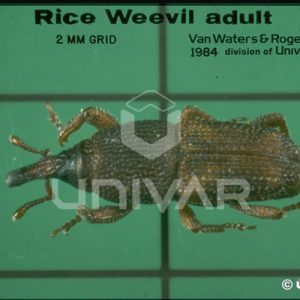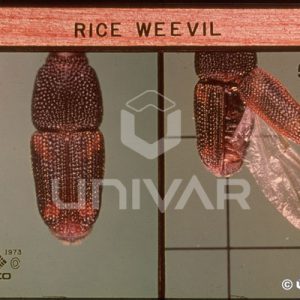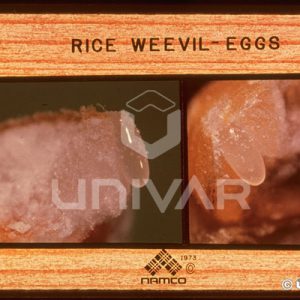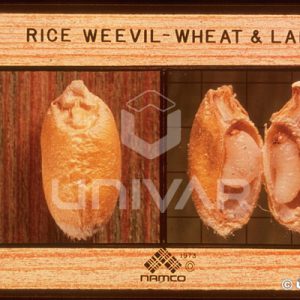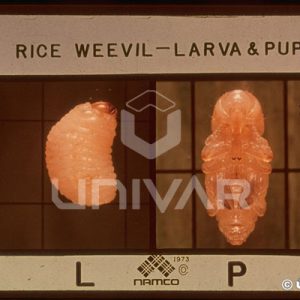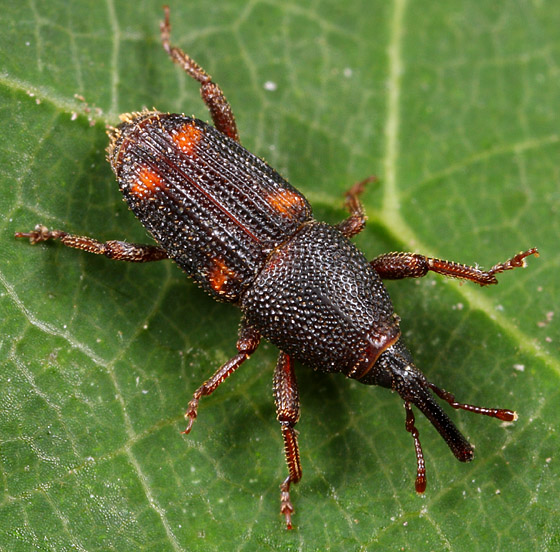
Common Name: Weevil – Rice weevil
Latin Name: Sitophilus oryzae
Common Family Name: Weevils
Latin Family Name: Curculionidae
Other Names:
Origin: Its origin is believed to be India, but it now is one of the most important grain destroying pests in the world, and is found worldwide.
Biology: Rice weevils are an “internal” feeder, obliged to feed as larvae only within whole, unbroken grains, such as wheat, rice, corn, or other seeds. Bird seed in structures sometimes supports these pests, and hard processed products such as pet food nuggets or dry pasta also may suffice. Both adults and larvae feed on these foods, and adults also have been observed feeding on fruit. Adult rice weevils can fly. Adult females live about 5 months, laying up to 400 eggs in that time. She chews a small hole in the kernel or grain and deposits an egg, which she then covers with a film of gelatinous fluid. The larvae remain feeding within the grain for as little as one month in warm conditions.
Identification: Weevils are distinguished by the long “snout” coming from the front of the head, with a pair of chewing mandibles at the tip. Their antennae are distinctly bent or “elbowed” about half way out, and they arise from in front of the eyes on the snout. The important food pest weevils are tiny insects, only about 1/8 inch long, and they are dark brownish black. The rice weevil has 4 large reddish or orange patches on its elytra, two on each side. It has a dull appearance due to the large number of large pores on its exoskeleton, and quite often the flight wings will be visible, unlike the granary weevil, which cannot fly.
Characteristics Important in Control: Inspection to determine the location of infested products is important, and usually disposal of this infested material is done. Fumigation with methyl bromide or aluminum phosphide is routinely done to ensure clean, uninfested product is put into storage in commercial facilities. Monitoring with pheromone traps will help to determine if adult activity is beginning.
